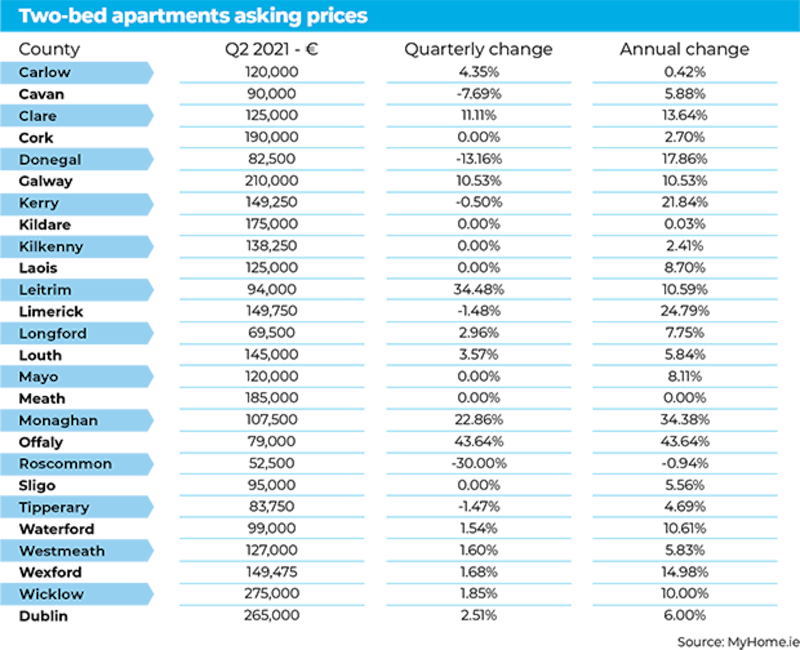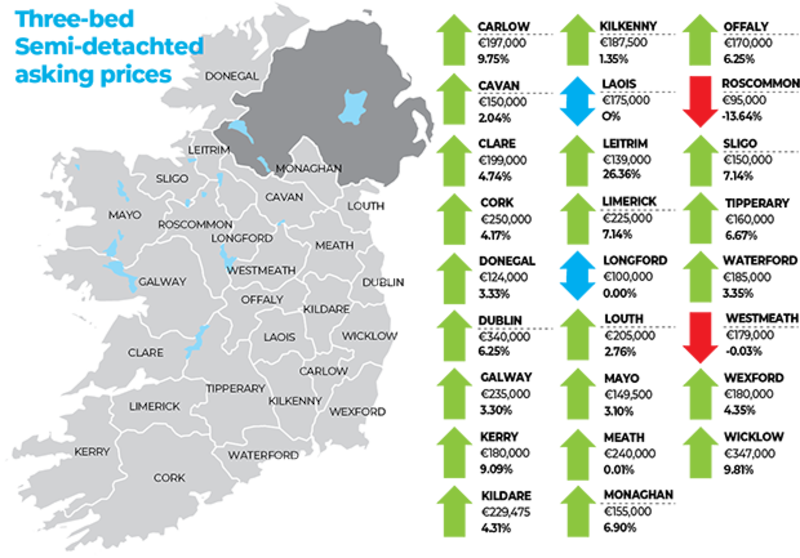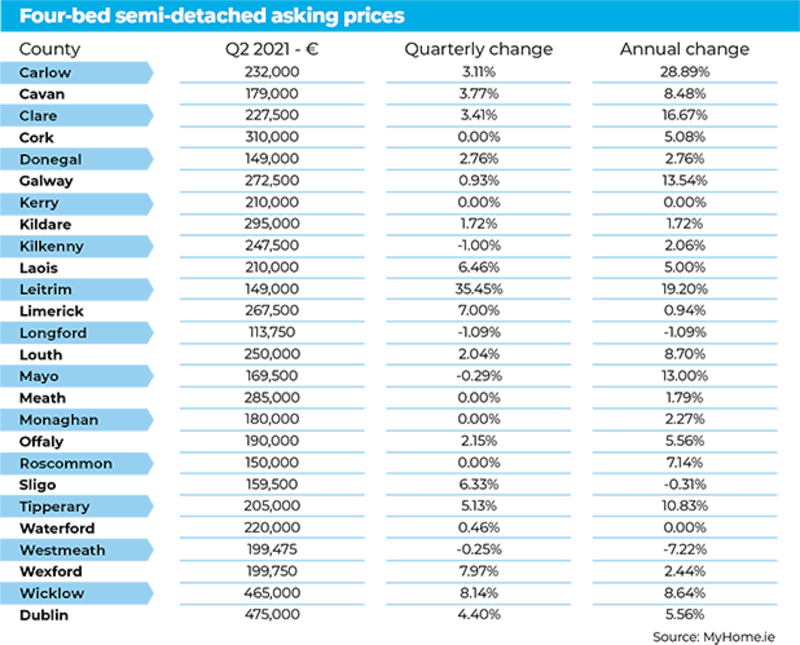House prices have surged by more than 13 per cent in the past 12 months, according to two separate reports, which also point to a greater acceleration in prices outside Dublin.
Property websites myhome.ie and daft.ie both recorded a major pick-up in headline inflation in their latest quarterly reports as the demand for homes outstripped supply, with MyHome saying demand was now “red hot”.
MyHome, which is owned by The Irish Times, said the typical asking price for a home nationally rose by 13 per cent to €303,000 in the second quarter, breaking the €300,000 mark for the first time. In Dublin the typical asking price was €412,000, up 10.6 per cent year on year.
Daft also put the annual rate of house price inflation at 13 per cent , its highest since early 2015, noting the average price of a home on its website rose by €34,000 to €284,000 year on year in the second quarter.
This meant prices had risen for four consecutive quarters for the first time since 2014, Daft said.
The official rate of annual house price growth – as recorded by the Central Statistics Office, which bases its calculation on stamp duty data filed with Revenue – was put at 4.5 per cent in April.
That put house prices nationally 14.3 per cent lower than their highest level in 2007 while Dublin property prices are 19.6 per cent lower than their February 2007 peak.

In its report, Daft noted that the total number of properties available to buy on its website – as of June 21st – was fewer than 12,500, up slightly from the March total (11,900), but down by more than 6,000 on the same period last year
It also identified a split between price trends in Dublin and elsewhere.
In Dublin, prices rose 8.4 per cent in the year to June 2021, the fastest rate of inflation since early 2018, but price increases outside the capital were twice as large, it said.
In the cities of Cork, Limerick and Waterford, listed prices were 14.3-15.5 per cent higher in the second quarter, while in Galway city, prices rose 12.6 per cent in the same period.
The average list price for a home in Dublin City was €402,028, up 8.4 per cent year on year. In Cork City it was €303,491, up 14.3 per cent; in Galway City it was €313,360, up 12.6 per cent; in Limerick City, it was €224,587, up 15.5 per cent while in Waterford City, it was €199,562, up 14.8 per cent.
Daft said prices rose across all 54 regional markets covered by its report. In all markets outside Dublin, price rises are above 12 per cent year-on-year, with Dublin regions all below 10 per cent.

Rural regions
The largest price differences are in rural regions and counties with Longford, Wexford, Waterford, Kerry and Roscommon all seeing price rises above 20 per cent year on year.

"So while construction remains woefully inadequate compared to the true level of housing need in Ireland – likely as high as 50,000 new homes across all tenures and types – it can't explain the spike in prices over the last year," economist Ronan Lyons, author of the Daft report, said.
“Instead, it is the second-hand market that is driving the fall-off in supply. Between 2015 and 2019, the typical month in Ireland saw just under 5,000 homes listed for sale, the vast majority of those second-hand,” he said.
The author of the MyHome report, Davy chief economist Conall Mac Coille, said housing demand was now “red hot”.
“The average time to sale agreed has fallen back to a record low of 3.8 months, indicating that whatever stock is available is being purchased ever more quickly,” he said.
When the pandemic hit last year, many commentators predicted a significant downturn in housing demand due to falling incomes and higher rates of unemployment.
However, the opposite has happened, with demand accelerating on foot of remote working and increased savings. Supply, meanwhile, has been hampered by restrictions, adding to existing pressures in the market.











